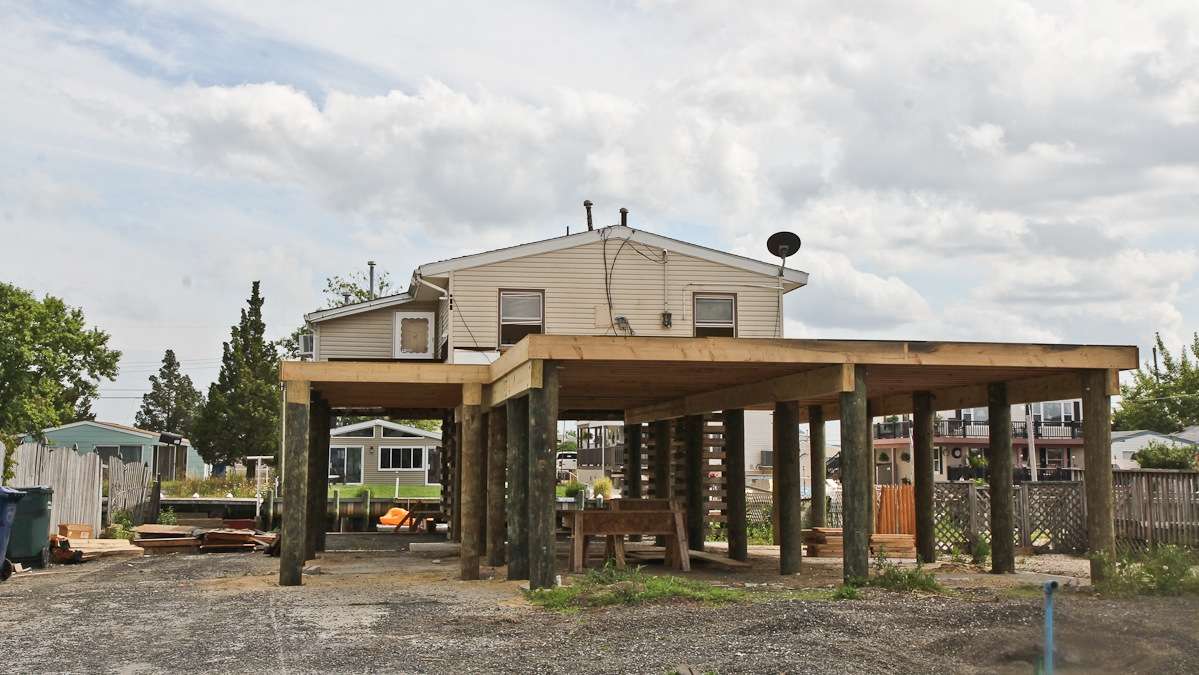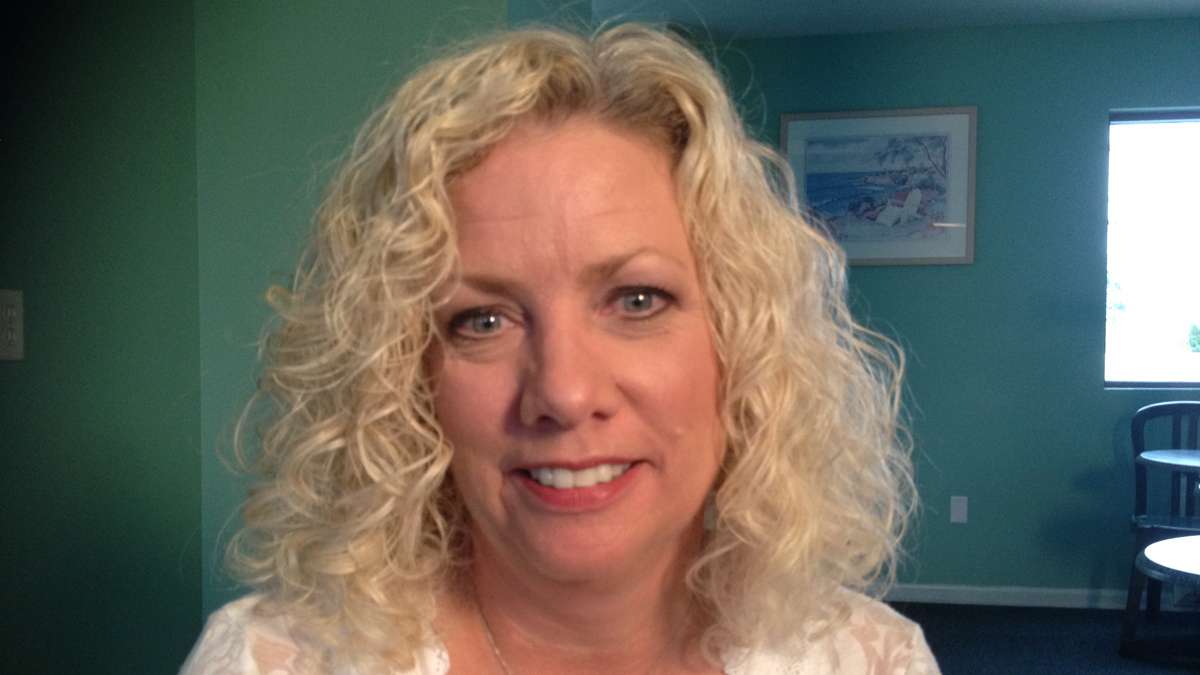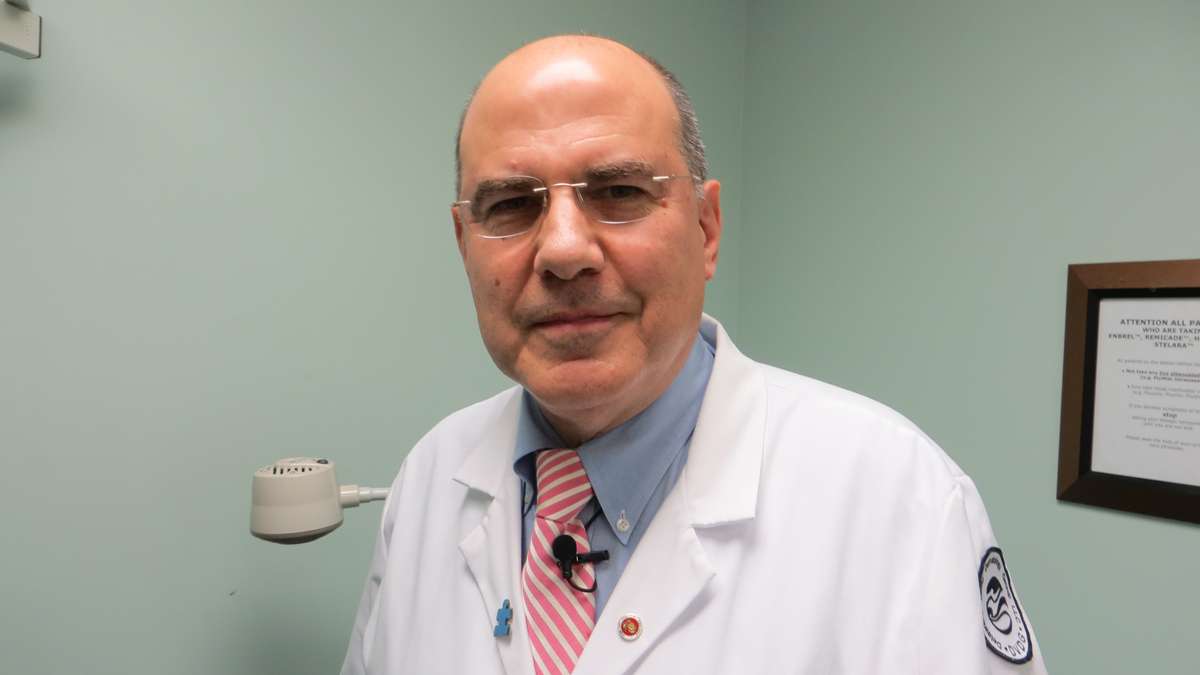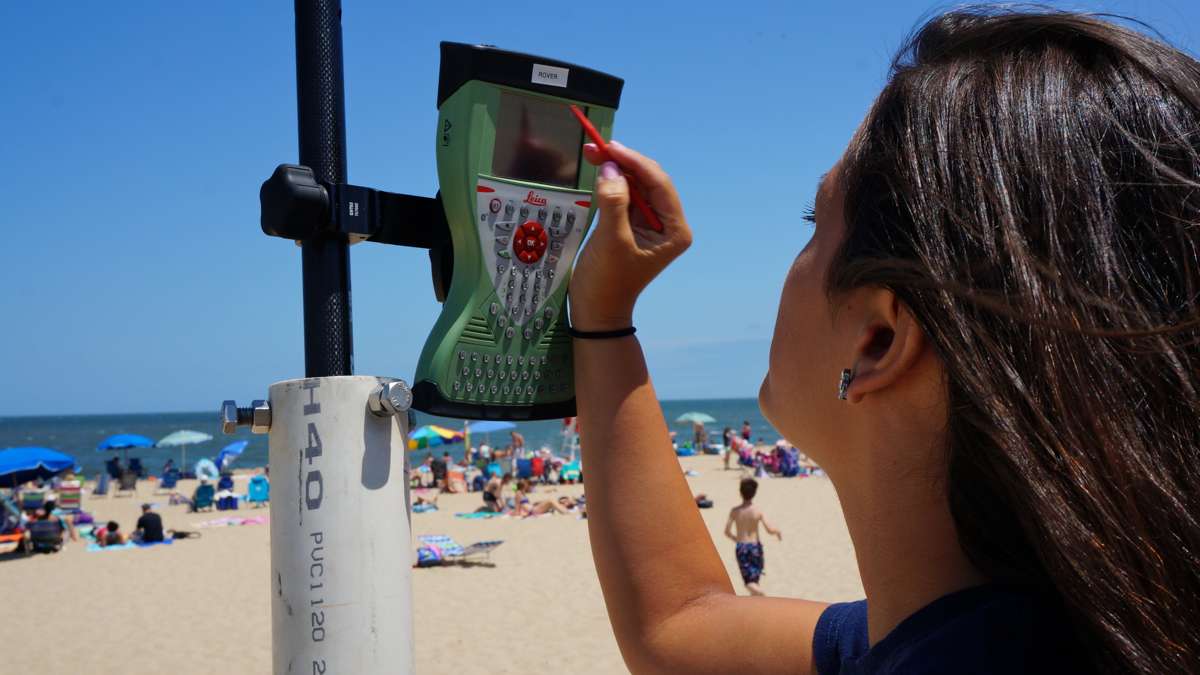Delaware beaches serve as living laboratories for understanding surf zone injuries
Listen-

-

-

-

-

-

-

-

-

-

-

-

A home is raised in Tuckerton
-

-

-

-

-

-

-

-

-

-

-

-

-

-

Coastal engineers and physicians are teaming up to look at correlations between beach-related injuries and breaking waves close to the shore.
At many beaches, posted signs warn swimmers of rip tides and the danger of being pulled out into the ocean. Less well known—but just as scary—are breaking waves that can cause injuries closer to the shore. This summer, coastal engineers and physicians are working together to better understand what makes those injuries more likely to occur.
Measuring the beachWith that goal, recent University of Delaware engineering graduate Veronica Citerone and research partner Katie Hutschenreuter have been out on the beach every day since June first, taking measurements.
Their instrument of choice is an odd-looking three-wheeled buggy with a tall pole at the center. On top, about 10 feet high, rests a small saucer-shaped sensor. As Citerone pushes it in a line down to the water, it beeps.
“We’ve gotten some really funny guesses as to what it is,” she said. “Just recently, we got portable shower, and a shark finder. And we always get metal detector.”
It’s actually a GPS—similar to those in your phone or car. But it’s far more sensitive, accurate down to just two centimeters, or less than an inch. With it, she can find out exactly how steep the beaches are.
It’s all part of a project designed to link physical aspects of the beach to the number of injuries beachgoers sustain.
From beach to hospitalFor the most part, those injuries are minor: ankle sprains or small fractures. But that’s not always the case.
“We see people with ruptured spleens, lacerated livers, lacerated kidneys,” said Paul Cowan, Chief of Emergency Medicine at Beebe Healthcare, and leader of the hospital side of the study.
Worse yet are the cervical spine injuries—which when combined with water, can lead to drowning, and ultimately, death.
Even though Cowan grew up in the area, he had no idea that the surf zone was so dangerous until recently. After completing his training at Christiania in Wilmington, he decided to move to Lewes, just minutes from the coast.
“Cristiana is a level one trauma center that’s located 500 yards from the busiest interstate in the country,” he said. “And I felt like I didn’t see nearly as many cervical spine injuries there from motor vehicle accidents as what I did here, that first summer.”
Curious clustersIn the past four seasons the hospital has treated more than 1,200 beach-related injuries, with approximately 10 percent requiring a prolonged hospital stay or resulting in a permanent disability. What intrigued Cowan was the unpredictability of when those injuries occur. Days would go by, he said, and no beachgoers would rush to the hospital. But on others, 15 or 20 would show up.
“You could actually smell it,” he said, “because all of sudden the Department would smell like suntan lotion, with these people there.
It was puzzling because Cowan wasn’t just seeing surges on the weekends, when the beach was busiest. That got him wondering whether certain environmental conditions might be responsible.
Deciphering the wavesTo track those down, Cowan is now collaborating with scientists from the University of Delaware. Coastal engineer Jack Puleo is leading the experiments at the beach.
“When you go to the beach you probably think it doesn’t look any different than it did the last time I was here,” said Puleo. “But the beach changes a lot, specifically right in this region called the swash zone, and that’s where people are dipping their toes in the water, or skim boarders are riding their skimboards.”
That’s where the highly sensitive GPS buggy comes in. It can detect small changes in elevation as a result of the water moving over the sand at different strengths and paces.
In turn, Puleo said, “the shape of that profile can alter how the waves approach the coast and break.”
Breaking is how waves lose energy. On low-sloping beaches, waves will break, reform, and break five or six times before hitting the swash zone, losing some of their oomph each time.
But on steeper beaches, like many in Delaware and New Jersey, a wave might only break once.
“When it only breaks once on the beach,” said Puleo, “it’s releasing all of its energy, or dissipating all of its energy, if you will, in a narrow spot.”
If that wave catches someone off guard, it can easily slam a swimmer into the sand hard enough to produce the injuries Cowan has been seeing.
Along with the elevation data, Puelo has installed acoustic Doppler current profilers at each of the five Delaware beaches they’re studying. Located just offshore, and marked by large yellow buoys, the underwater sensors can determine the speed, direction, and height of the waves.
If the team can identify the combinations of wave or beach features that are most strongly correlated with people being injured, they hope to be able to predict when it’s not safe to be out swimming.
“How cool would it be to have an app?” asked Cowan. “An app for your phone where you could get real-time data, because the surf changes through the course of the day.”
Until then, he offers some practical advice.
“Never, ever turn your back on the waves,” said Cowan. “You would never walk across six lanes of traffic with your eyes closed, and it’s just as dangerous to turn your back on the waves as you come out of the water.”
WHYY is your source for fact-based, in-depth journalism and information. As a nonprofit organization, we rely on financial support from readers like you. Please give today.



